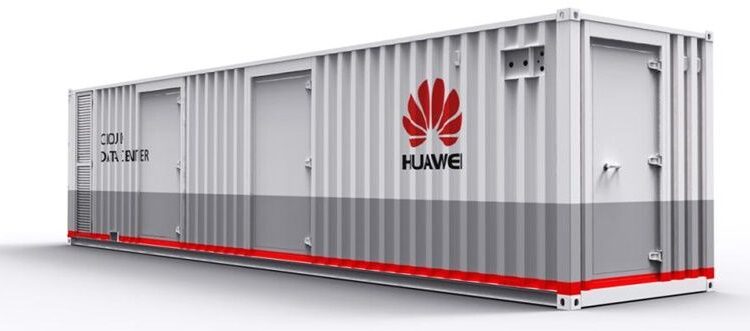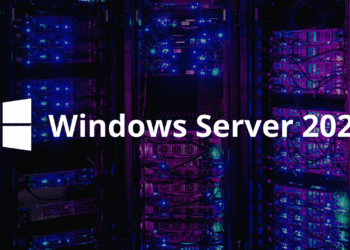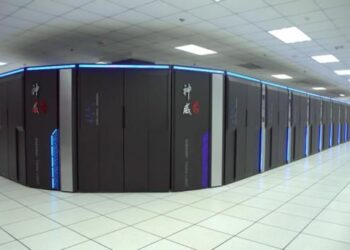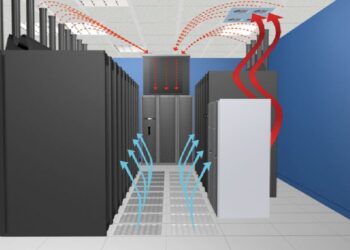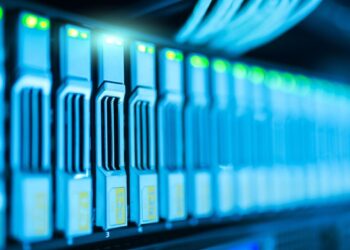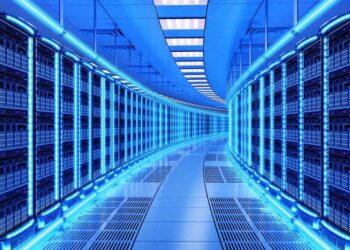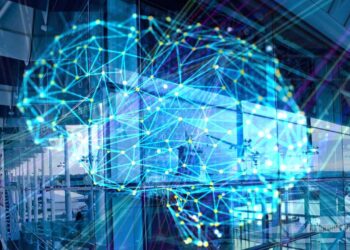In today’s rapidly evolving digital landscape, data centers have become the backbone of modern enterprises and cloud-based services. Huawei, one of the world’s leading technology innovators, has recently unveiled a comprehensive roadmap for the future of data centers. This announcement not only sets the stage for groundbreaking technological advancements but also highlights Huawei’s commitment to building robust, secure, and energy-efficient infrastructures. This article will explore Huawei’s new trends, delve into the underlying technologies, and analyze how these innovations are poised to redefine data center operations globally.
As data volumes continue to surge due to the exponential growth of cloud computing, the Internet of Things (IoT), and artificial intelligence (AI) applications, traditional data center models are being pushed to their limits. In response, Huawei has introduced a series of forward-thinking trends aimed at enhancing performance, scalability, and sustainability in the data center realm. By leveraging a blend of advanced hardware, innovative software solutions, and sustainable practices, Huawei is setting new standards for the industry.
The purpose of this article is to provide an in-depth analysis of Huawei’s data center trends, highlight the key technologies driving these changes, and examine the impact on global IT infrastructure. Whether you are a technology enthusiast, an IT professional, or an executive interested in digital transformation, this comprehensive guide will offer valuable insights into the future of data centers.
The Evolution of Data Centers
Historically, data centers were simple facilities with racks of servers and cooling systems designed primarily for storage and processing. Over time, the advent of cloud computing and the need for rapid data analysis pushed these facilities to adopt more sophisticated architectures. Today’s data centers are hubs of innovation that support real-time analytics, AI-driven decision making, and massive interconnected networks.
Huawei’s latest unveiling reflects this evolution by introducing trends that emphasize:
- Efficiency: Reducing energy consumption and maximizing performance.
- Scalability: Enabling rapid expansion and seamless integration of new technologies.
- Security: Implementing robust cybersecurity measures to protect sensitive data.
- Sustainability: Incorporating eco-friendly practices to minimize the environmental footprint.
Huawei’s Vision for the Future
Huawei’s vision centers on the transformation of data centers from mere storage facilities to intelligent, self-optimizing ecosystems. The company’s strategic roadmap outlines a multi-faceted approach that includes:
- Investment in R&D: Huawei continues to allocate significant resources toward research and development to stay at the forefront of data center innovation.
- Collaboration with Industry Leaders: By partnering with top technology firms and cloud service providers, Huawei ensures that its solutions are globally competitive and highly adaptable.
- Focus on End-to-End Solutions: Huawei’s strategy integrates hardware, software, and network technologies to create seamless, comprehensive data center ecosystems.
- Commitment to Sustainability: Recognizing the importance of green technology, Huawei is pioneering energy-efficient designs and renewable energy integrations within data centers.
Key Technologies Driving Huawei’s Data Center Trends
Huawei’s data center trends are underpinned by several emerging technologies. Each plays a critical role in reshaping the data center landscape and improving overall operational efficiency. The following list outlines the key technological drivers:
A. Artificial Intelligence Integration
Huawei is embedding AI capabilities into data center management, allowing systems to autonomously optimize performance, predict failures, and reduce downtime. Machine learning algorithms analyze operational data in real time to adjust cooling, energy use, and workload distribution dynamically.
B. Edge Computing Expansion
With the rise of IoT and real-time applications, processing data at the edge has become essential. Huawei’s edge computing solutions bring data processing closer to the source, minimizing latency and reducing the load on central data centers.
C. Modular Infrastructure Design
Modular data centers provide scalability and flexibility by allowing operators to add or remove components as needed. Huawei’s designs focus on modularity to ensure that data centers can adapt to changing demands without major overhauls.
D. Renewable Energy Utilization
Environmental concerns are at the forefront of modern data center operations. Huawei is leading the charge by incorporating renewable energy sources—such as solar and wind power—into their data center designs to reduce carbon footprints and promote sustainability.
E. Advanced Cybersecurity Protocols
Data breaches and cyber-attacks are increasing in frequency and sophistication. Huawei is integrating advanced encryption, multi-layered security protocols, and AI-based threat detection systems to safeguard data centers against these evolving threats.
F. Virtualization and Cloud Scalability
By adopting virtualization technologies, Huawei enables data centers to maximize resource utilization, reduce physical hardware requirements, and provide scalable cloud services. This flexibility is critical for handling variable workloads and supporting diverse applications.
G. Data Analytics and Machine Learning
Big data analytics is transforming how businesses extract insights from vast amounts of information. Huawei’s data centers incorporate advanced analytics tools that leverage machine learning to optimize data flow and enhance decision-making processes.
H. 5G Connectivity Enhancements
The rollout of 5G networks offers unprecedented data transmission speeds and reliability. Huawei is at the forefront of integrating 5G connectivity into data centers, ensuring that high-speed networks support real-time data processing and remote operations.
I. IoT Integration
As billions of devices become connected, data centers must handle an overwhelming amount of real-time data. Huawei’s IoT integration strategies enable seamless communication between devices and centralized systems, ensuring efficient data management and processing.
J. Automation and Robotics
Automation is revolutionizing data center operations. Huawei is deploying robotics and automated systems to perform routine tasks such as server maintenance, inventory management, and environmental monitoring, thereby reducing human error and operational costs.
Enhancing Data Center Architecture and Infrastructure
The architectural design of modern data centers has evolved significantly, and Huawei is spearheading this evolution with innovative approaches. Traditional data centers often face challenges such as scalability limitations, high energy consumption, and inefficiencies in cooling and space utilization. Huawei’s new data center models address these challenges through:
A. Intelligent Cooling Systems
Effective cooling is crucial for maintaining optimal performance and prolonging the life of server hardware. Huawei’s advanced cooling solutions are designed to:
- Optimize airflow management: Using AI-driven sensors to monitor temperature fluctuations and adjust cooling systems accordingly.
- Reduce energy consumption: Implementing liquid cooling and advanced ventilation techniques to decrease reliance on traditional air conditioning systems.
- Enhance hardware lifespan: Maintaining consistent temperature levels to prevent overheating and component degradation.
B. Scalable Modular Design
Modular data centers allow for incremental expansion, making it easier for businesses to scale their operations without incurring substantial capital expenditures. Key benefits of modular designs include:
- Flexibility: Operators can quickly add or remove modules based on demand.
- Reduced Downtime: Modular upgrades can be performed with minimal disruption to ongoing operations.
- Cost Efficiency: Modular systems reduce waste and lower the overall cost of ownership through better resource allocation.
C. High-Density Computing
As computational demands increase, high-density computing becomes essential. Huawei’s data centers are built to support high-density server configurations, which offer:
- Improved processing power: Allowing for more powerful computing in a compact space.
- Enhanced energy efficiency: Using advanced power management systems to ensure that higher densities do not lead to excessive energy consumption.
- Reduced physical footprint: Enabling more computing power without the need for expansive physical spaces.
D. Future-Proof Infrastructure
To remain competitive in the fast-paced tech environment, data centers must be adaptable to emerging technologies. Huawei’s designs focus on future-proofing infrastructure through:
- Interoperability: Ensuring that new hardware and software solutions can be seamlessly integrated into existing systems.
- Modular upgrades: Allowing for the quick adoption of new technologies without requiring a complete overhaul of the data center.
- Sustainable practices: Incorporating renewable energy sources and energy-efficient technologies that will remain viable in the long term.
Security and Compliance in the Modern Data Center
Security is a top priority in the design and operation of modern data centers. With cyber threats evolving every day, ensuring data integrity and protection is paramount. Huawei has implemented several advanced security measures to safeguard its data centers:
A. Multi-Layered Defense Strategies
Huawei’s data centers employ a multi-layered security approach that includes:
- Physical Security: Robust access controls, surveillance systems, and secure facility designs to prevent unauthorized entry.
- Network Security: Firewalls, intrusion detection systems, and advanced encryption protocols to protect data in transit.
- Application Security: Regular software updates, vulnerability assessments, and secure coding practices to minimize risks from application-level attacks.
B. AI-Driven Threat Detection
By incorporating AI and machine learning, Huawei has developed systems that continuously monitor network traffic and detect anomalies in real time. These systems are capable of:
- Identifying potential threats: Quickly flagging suspicious activities that may indicate cyber-attacks.
- Automated response: Initiating pre-programmed protocols to isolate and mitigate threats without human intervention.
- Continuous improvement: Learning from each incident to enhance future threat detection capabilities.
C. Compliance with Global Standards
Data centers must adhere to international regulations and industry standards to protect sensitive information. Huawei’s data center solutions comply with:
- GDPR (General Data Protection Regulation): Ensuring that data privacy practices meet stringent European standards.
- ISO/IEC 27001: Adhering to best practices in information security management.
- Other regional regulations: Customizing security measures to comply with local legal requirements in various markets.
Sustainability and Environmental Impact
In addition to performance and security, sustainability is a critical focus for modern data centers. Huawei is committed to minimizing the environmental impact of its operations through various initiatives:
A. Energy Efficiency Measures
Huawei’s data centers incorporate cutting-edge energy-saving technologies, such as:
- Intelligent power management: Utilizing AI to dynamically allocate resources and reduce energy waste.
- High-efficiency cooling systems: Implementing advanced cooling methods to minimize energy consumption while maintaining optimal operating conditions.
- Energy recovery solutions: Capturing and reusing waste heat to improve overall energy efficiency.
B. Use of Renewable Energy
A significant aspect of Huawei’s sustainability strategy is the integration of renewable energy sources. This includes:
- Solar Power: Installing photovoltaic panels on data center rooftops and in adjacent fields to generate clean energy.
- Wind Energy: Leveraging wind farms to supplement the power needs of high-demand data centers.
- Green Certifications: Achieving recognized sustainability certifications to validate the eco-friendly design of data center facilities.
C. Reducing Carbon Footprint
Huawei’s approach to sustainability extends to reducing the overall carbon footprint of data center operations. Strategies include:
- Optimized facility layouts: Designing data centers to maximize natural cooling and reduce dependency on artificial systems.
- Eco-friendly materials: Using sustainable building materials that minimize environmental harm.
- Lifecycle management: Implementing recycling and disposal programs to manage electronic waste responsibly.

Huawei’s Global Impact on the Data Center Market
Huawei’s data center innovations are not only transforming local operations but also impacting the global market. By introducing new trends, Huawei is positioning itself as a leader in the digital transformation era. Key aspects of Huawei’s global strategy include:
A. Strategic Partnerships
Huawei is forging alliances with leading technology providers and cloud service companies around the world. These partnerships are designed to:
- Facilitate knowledge sharing: Enabling the exchange of ideas and best practices across different markets.
- Accelerate innovation: Collaborating on research and development initiatives to push the boundaries of data center technology.
- Expand market reach: Leveraging partner networks to bring Huawei’s solutions to new regions and industries.
B. Investment in Emerging Markets
Recognizing the vast potential in emerging economies, Huawei is expanding its data center footprint in regions that are experiencing rapid digital growth. This strategy involves:
- Localized data centers: Building facilities tailored to the specific needs and regulatory environments of regional markets.
- Job creation and training: Investing in local talent and providing training programs to support the operation and maintenance of new data centers.
- Economic growth: Driving digital transformation that supports broader economic development in underserved areas.
C. Driving Digital Transformation
Huawei’s innovations are at the core of digital transformation initiatives across multiple sectors. By providing advanced data center solutions, Huawei helps businesses to:
- Modernize IT infrastructure: Transition from legacy systems to agile, scalable environments that support digital-first strategies.
- Enhance customer experiences: Utilize real-time data processing and analytics to offer more personalized and efficient services.
- Foster innovation: Enable the adoption of emerging technologies such as AI, IoT, and 5G, which are critical for future business models.
Future Outlook and Industry Implications
Huawei’s unveiling of new data center trends marks a turning point in how modern data centers are conceptualized and built. The long-term implications for the industry include:
A. Increased Adoption of AI and Automation
The integration of AI and automation into data center management is expected to revolutionize operations by:
- Reducing operational costs: Automation minimizes the need for manual intervention, thus lowering maintenance expenses.
- Enhancing efficiency: AI-driven systems optimize resource allocation, resulting in higher performance and energy savings.
- Improving reliability: Automated monitoring and predictive maintenance reduce downtime and extend the lifespan of hardware components.
B. Greater Emphasis on Sustainability
As environmental regulations tighten and the push for green technology intensifies, data centers will increasingly prioritize sustainability. Huawei’s focus on renewable energy and energy-efficient designs sets a benchmark for the industry, encouraging competitors to adopt similar practices.
C. Expansion of Edge and Hybrid Cloud Solutions
The growing demand for low-latency processing and real-time data analytics is likely to accelerate the shift toward edge computing and hybrid cloud models. Huawei’s innovations in these areas will help organizations achieve:
- Better scalability: Seamless integration of centralized and decentralized computing resources.
- Enhanced performance: Reduced latency and improved processing speeds through local data handling.
- Greater flexibility: Adaptable solutions that cater to both cloud and on-premises infrastructures.
D. Strengthening Cybersecurity Measures
With cyber threats evolving at an unprecedented rate, the importance of robust security protocols cannot be overstated. Huawei’s multi-layered security framework, which combines physical, network, and application-level defenses, serves as a model for future data center designs. This comprehensive approach will likely inspire further advancements in cybersecurity technologies, ensuring that digital infrastructures remain resilient against increasingly sophisticated attacks.
E. Fostering a Culture of Innovation
Huawei’s aggressive investment in research and development is expected to spur a wave of innovation across the global data center industry. As more companies adopt intelligent, scalable, and sustainable solutions, the industry as a whole will benefit from improved operational efficiencies, reduced costs, and enhanced service delivery. This culture of innovation will be critical in addressing the ever-growing demands of digital transformation.
Case Studies and Practical Applications
To better understand the impact of Huawei’s new data center trends, it is useful to examine several case studies and real-world applications. These examples illustrate how Huawei’s solutions are being implemented across different industries:
A. Cloud Service Providers
Major cloud service providers are increasingly incorporating Huawei’s data center technologies to enhance their offerings. For example:
- Performance Optimization: By integrating AI-driven resource management, cloud providers can dynamically allocate computing power to meet peak demand, ensuring a seamless user experience.
- Cost Reduction: Automation and virtualization allow providers to reduce operational costs, thereby passing savings onto their customers.
- Security Enhancements: Advanced cybersecurity measures help protect sensitive customer data, fostering trust and compliance with global regulations.
B. Telecommunications Companies
Telecom operators are leveraging Huawei’s edge computing and 5G integration to improve network performance and support innovative services:
- Enhanced Connectivity: The adoption of 5G and edge computing reduces latency, enabling real-time applications such as autonomous driving and smart cities.
- Scalable Infrastructure: Modular data center designs allow telecom companies to quickly expand their network capacities in response to growing demand.
- Sustainable Operations: By incorporating renewable energy and efficient cooling systems, operators can reduce both operational costs and environmental impact.
C. Financial Institutions
Financial organizations require secure, high-performance data centers to support their transaction processing and data analytics operations. Huawei’s data center trends benefit this sector by:
- Ensuring Compliance: Robust security measures and adherence to international standards ensure that financial data remains secure and regulatory compliant.
- Improving Performance: High-density computing and AI-driven analytics allow financial institutions to process transactions and analyze market trends faster than ever before.
- Enhancing Disaster Recovery: Advanced backup and recovery solutions ensure that critical financial data is always protected, even in the event of unforeseen disruptions.
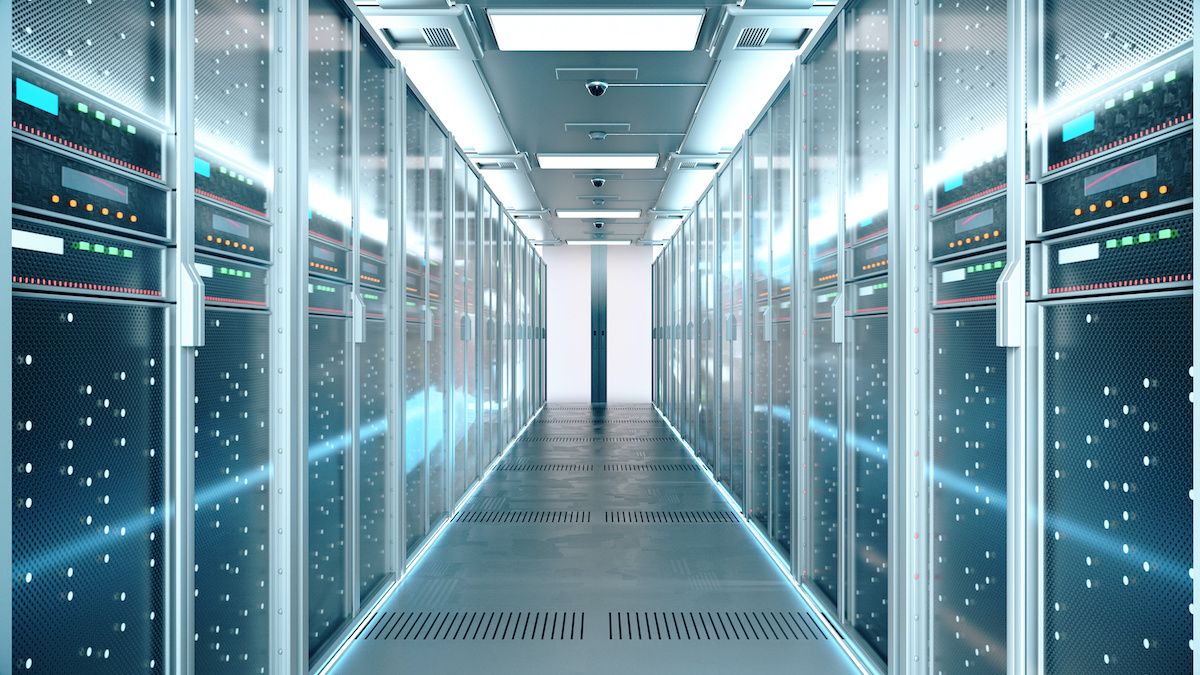
Implications for Business and IT Strategy
Huawei’s data center innovations have far-reaching implications for business strategy and IT planning. Companies looking to stay competitive in an increasingly digital world must consider the following strategic aspects:
A. Investment in Modern Infrastructure
To harness the full potential of digital transformation, businesses should invest in modern, scalable data centers that incorporate the latest technologies. This involves:
- Assessing Current Needs: Evaluating existing infrastructure to identify areas for improvement.
- Planning for Scalability: Choosing solutions that offer flexibility to grow with business demands.
- Prioritizing Security and Sustainability: Ensuring that investments also address cybersecurity and environmental concerns.
B. Embracing Hybrid Cloud and Edge Solutions
The trend toward hybrid cloud and edge computing represents a paradigm shift in how businesses manage data. Key strategic considerations include:
- Optimizing Data Flow: Balancing centralized data processing with edge computing to minimize latency.
- Enhancing Customer Experience: Using real-time analytics to provide more personalized services.
- Reducing Costs: Leveraging scalable cloud solutions to optimize resource allocation and reduce infrastructure expenses.
C. Fostering Innovation Through Collaboration
The digital age demands continuous innovation. By collaborating with technology providers like Huawei, businesses can:
- Gain Access to Cutting-Edge Solutions: Leverage the latest advancements in AI, automation, and cybersecurity.
- Share Knowledge: Participate in industry forums and joint research initiatives to stay ahead of technological trends.
- Drive Digital Transformation: Implement innovative strategies that not only improve operations but also create new business opportunities.
Conclusion
Huawei’s unveiling of new data center trends represents a pivotal moment in the evolution of digital infrastructures. By focusing on efficiency, scalability, security, and sustainability, Huawei is setting a new benchmark for data center technology. From the integration of AI and automation to the adoption of renewable energy and edge computing, these trends are designed to meet the challenges of a rapidly changing digital environment.
As enterprises worldwide continue to invest in digital transformation, the advancements in data center technology will play a critical role in shaping the future of IT operations. Huawei’s innovative approach offers a glimpse into a future where data centers are not only more powerful and efficient but also more sustainable and resilient. For businesses aiming to stay ahead in this digital era, embracing these trends is not just an option—it’s a necessity.
By transforming how data is processed, stored, and secured, Huawei is not only responding to the current market demands but also paving the way for a future marked by unprecedented digital capabilities. As the world increasingly relies on real-time data and intelligent analytics, the evolution of data centers will continue to be a cornerstone of technological progress and economic growth.

